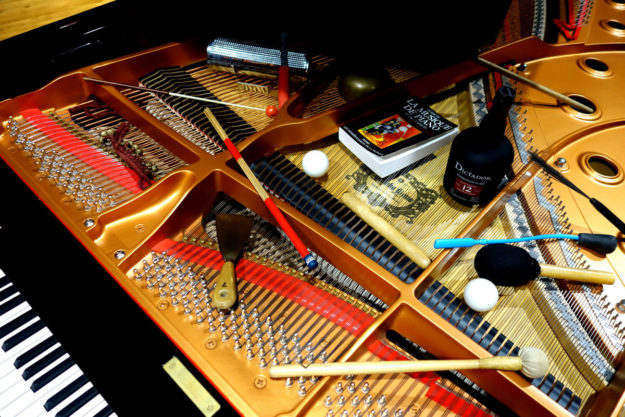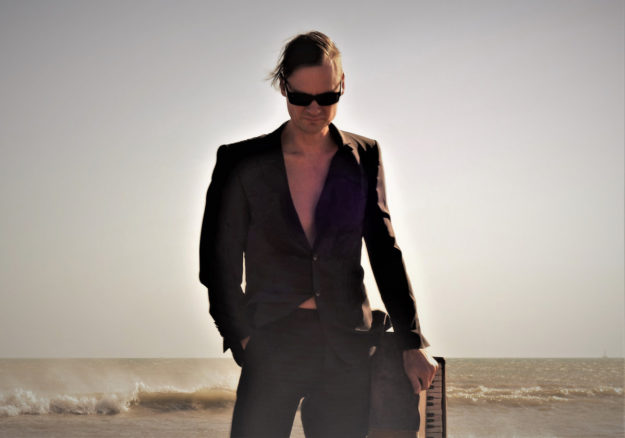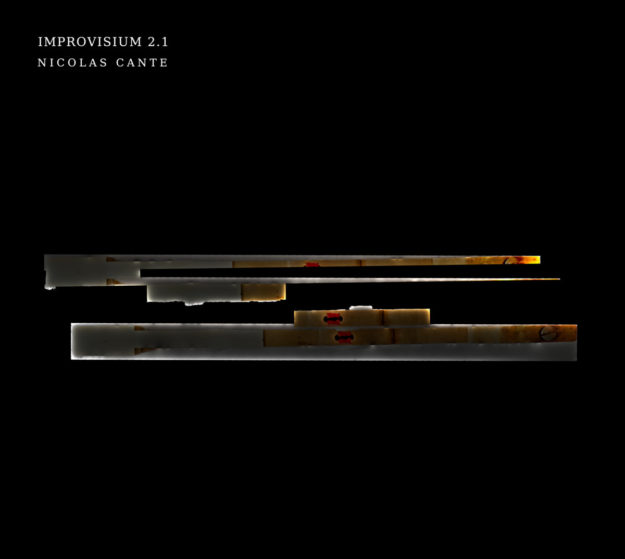Nicolas Cante, par la diversité de ses influences et de ses inspirations, est un pur produit de notre temps. Formé à l’école du jazz au Conservatoire d’Aix-en-Provence, il a ouvert ses oreilles et son piano à de nombreuses autres esthétiques : rock, noise, musiques expérimentales et techno. C’est dans les free parties des années 90 qu’il a probablement vécu ses plus grands émois de jeunesse quand déjà, dans la puissance des décibels, il rêvait les pieds dans la boue et la tête dans les astres à l’univers musical pythagoricien. Il a su en tirer profit, et le fait que cet album soit entièrement réalisé d’un bout à l’autre en Do it Yourself, de la composition jusqu’à la production, n’est certainement pas innocent.
Improvisium est son projet expérimental pour piano acoustique préparé électroniquement. Il a fallu attendre près de dix ans pour que sorte ce deuxième opus, après un premier album très réussi. Ce disque est différent. Moins radical, il reflète l’évolution de la personnalité du pianiste/compositeur, tout en intégrant de manière plus apaisée les esthétiques qui l’ont façonné. Après cette décennie passée, l’album ne s’embarrasse plus de titres évocateurs ou descriptifs : tous les morceaux sont intitulés laconiquement de l’abréviation « IV2 » suivie de la tonalité générale (« IV2Abm », « IV2Am », « IV2Eb »…). Cependant, l’abstraction revendiquée par le musicien, qui s’intéresse à l’acoustique, à la vibration et à la physicalité des sons, n’empêche pas l’expression d’une grande palette de sensibilités, déployée d’un bout à l’autre du CD.
Quand « IV2Abm » (1) débute le disque de façon modale, résolument tournée vers l’Orient, « IV2Am » (2) poursuit sur une architecture répétitive envoûtante, évoquant un Philip Glass qui aurait rencontré une boîte à rythmes sur son chemin. Les harmonies oniriques de « IV2Eb » (3), suivies du chaotique « IV2Fr2 » (4), laissent la place à un morceau dansant, martial et plein de sarcasmes : « IV2Cm » (5), scherzo endiablé, ludique et grand-guignol, aux carrures bien délimitées. Puis, après l’extase d’« IV2Ab » (6), où les cordes du piano bourdonnent, résonnent, grincent et vibrent de mille façons dans un espace-temps suspendu, la nostalgie stylisée d’« IV2Dm » (7), le bruitisme d’« IV2Fr1 » (8) et le nouvel édifice répétitif d’« IV2Em » (9), les arabesques modales et mélancoliques de « IV2C7 » (10) referment la boucle d’un disque en quasi-palindrome stylistique.
Entre la transe d’une rave party dans sa pleine lancée, la moiteur d’un club de jazz dans les derniers feux de la nuit et le piano bar solitaire peuplant les conversations des convives en fond nostalgique, les sons du piano étendu sont tous beaux sans distinction, qu’ils soient électroniques ou acoustiques, et les atmosphères sont ciselées avec soin. C’est le disque d’un musicien entré dans l’âge de la maturité.
Guillaume Kosmicki



)






